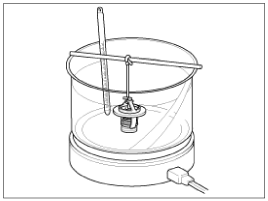Is measured value within specification?
 | ▶ Fault might be intermittent and caused either by poor contact in connectors or wiring harness, or it has been repaired and control module memory is not cleared yet. Thoroughly check terminal of battery, all connectors ( and connections) for looseness, bending, corrosion, contamination, deterioration, and/or damage. ▶ Repair or replace as necessary and then go to "Verification of Vehicle Repair" procedure. |
 | ▶ Carefully re-do this troubleshooting guide steps. ▶ If no problems were found with the circuits or connectors, Engine Coolant Temperature Sensor and then go to "Verification of Vehicle Repair" procedure. |
Note that engine coolant may flow out from the water temperature control assembly when removing the sensor.
Install the component with the specified torques.
Note that internal damage may occur when the component is dropped or mis- treated.
Insert the sensor in the installation hole and be careful not to damage.

